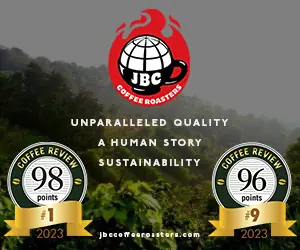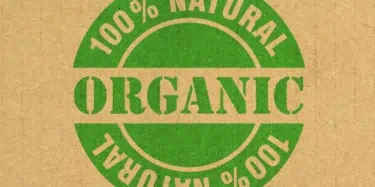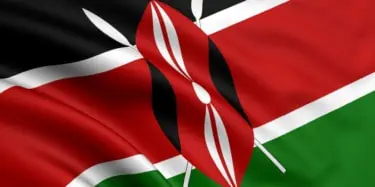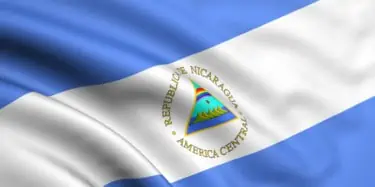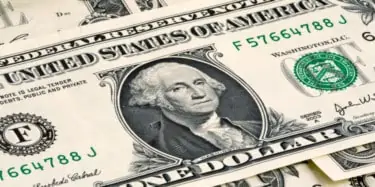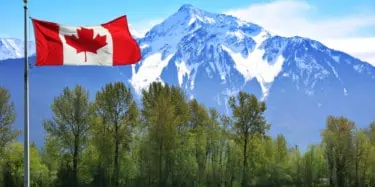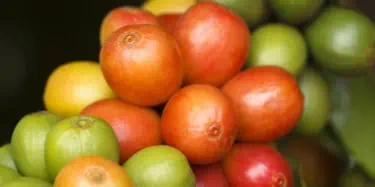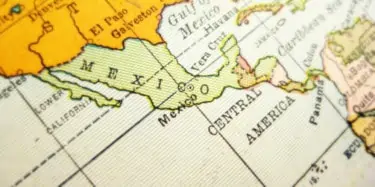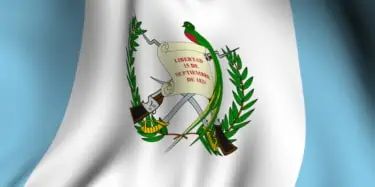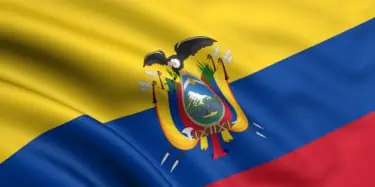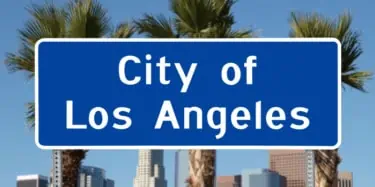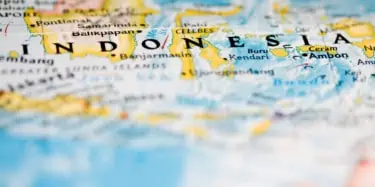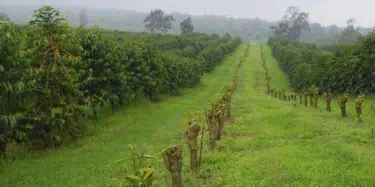Organic is the oldest and best established of the various certifications – Fair Trade, Rainforest Alliance, etc. – represented by the little seals that cluster on coffee packaging, all of them intent on reassuring the buyer that something positive has happened with the coffee inside the bag, even though it may not always be clear to the casual consumer what exactly it is or was. With organic
Tasting Reports – Most Recent
Coffee Review has published more than 250 monthly coffee tasting reports since February 1997. The most recent tasting reports appear below in reverse chronological order. You may narrow your search by category from the main navigation drop-downs or by using the key word search feature that appears in the page header. The content in tasting reports and associated reviews was correct at the time of publication but may not remain accurate over time.
Still Tops: Coffees of Kenya
Generally the central highlands of Kenya produce some of the most complex and subtly distinctive coffees in the world. There are a few other coffee origins/types that may be more distinctive, meaning more different from the sensory norm for coffee: Ethiopia Yirgacheffes, the very finest traditional Sumatras, the small but growing volume of coffee produced in Panama from trees of the Gesha variety.
Nicaragua: Continuity and Innovation
Nicaragua, very much in the news when we last reviewed its coffees in 2004, seems to have slid into the background of coffee consciousness again. In 2004 general coffee prices had just recovered from devastating lows and Nicaragua was in many ways the poster origin representing both the suffering in the coffee sector caused by low prices as well as exciting signs of recovery supported by a new
Quest for an Everyday Coffee: Macro-Lots
Readers often write to us asking for recommendations for an “everyday” coffee – the equivalent of the $10 bottle of wine, a reasonably priced, reasonably distinctive, but consistently available coffee. Most coffees that attract a high rating on Coffee Review are exceptional in some way: They are often produced from small, or “micro” lots of green coffee, specially selected for quality and
Canada: Doing Fine though Not So Different
This month’s survey of almost forty retail-roasted samples from twenty distinguished Canadian roasters confirms both the depth and liveliness of the current Canadian specialty coffee scene. It also suggests that Canadian specialty coffee roasting has proceeded in an essentially parallel track to specialty roasting in the U.S., although it’s possible to speculate on some very small differences in
Single-Origin Espressos
The practice of roasting a coffee from a single farm or cooperative for espresso brewing is a tactic that appears to be carrying the day at the higher end of the North American specialty coffee world. The old argument against single-origin espressos and in favor of blends ran: Put a single, unblended coffee under the magnifying intensity of espresso brewing and the coffee is liable to come out
The Single-Serve Compromise
The well-publicized commercial success of the Keurig single-serve brewer and Starbucks' efforts to get in on the single-serve action have created much breathless reporting and speculation in the financial press, but we don't hear much about the quality of the coffees the various contending single-serve systems are putting out, or their advantages (or pitfalls) for the coffee-engaged consumer. For
Readers’ Nominations
Perhaps we can take this annual cupping of coffees nominated by our readers as a kind of informal sampling of the state of specialty coffee based on the People’s input. At least a very small part of the People. If so, this early 2011 sampling provokes the following (strictly organoleptic-dotal and non-scientific) trends and observations. Conclusion one: The taste for darker roasted coffees has
African Intensity: Yirgacheffe, Sidama and Environs
When we taste our way into the world of southern Ethiopia wet-processed coffees -- the most famous names are Yirgacheffe and Sidamo or Sidama -- we enter a special and different sensory world than the one to which most North American coffee drinkers are accustomed. These coffees, produced largely from heirloom varieties of Arabica that are hardly grown anywhere else in the world, display intense
Prize-Winning Coffees from Latin America
The story this month may be more about what’s not reviewed here than what is. As in years past, we planned a review of competition-winning green coffees offered to North American consumers. These competitions are events "during which a jury of international cuppers spends several well-caffeinated days slurping, spitting and obsessing over a gradually narrowing group of fine coffees from a given
Brandy and Surprises: The New Naturals
For those unfamiliar with the emerging language of fine coffee the title of this article may be a puzzler. What’s a “natural” and what makes some of these “naturals” “new”? Natural is a positive name marketing-savvy Brazilians came up with some years ago to describe coffees that until that time were called “unwashed” or “dry-processed.” These are coffees consisting of beans that were dried
Quiet Distinction: Coffees of Guatemala
Guatemala is a tease of a coffee origin in sensory terms. It would be very difficult in a blind cupping to pick out any of the coffees we reviewed this month with absolute certainty as Guatemalas if they were mixed in with, say, other Central Americas. Yet all twelve of this month’s samples clearly share certain quiet but pervasive commonalities: balanced acidity (seldom overbearing or sharp),
Tall-Drink Espressos: Best Blends for Big Milk
One old-time coffee generalization certainly got shot down by this month’s reviews: the notion that the way to get pronounced espresso flavor in large (i.e. caffè latte-sized) volumes of hot milk is to roast the hell out of the coffees. The idea used to be that the burned pungency of darker roasted coffees would cut through the sweetening, muffling impact of the milk better than medium roasts,
Summer Selections: Coffees of Note
Coffee writers need vacations too. What we offer here in place of our usual monthly tasting report is a set of reviews of exceptional coffees that came into the Coffee Review lab during July 2010. The article originally scheduled for August (Tall Milk Espressos) will appear next month. In a sense, this fill-in-for-Ken's-vacation article is a roaster's choice exercise. The roasting companies
Pity the Poor Decaf Drinker: Signature Decaf Blends
I am a positive thinker when it comes to coffee, but this month's sampling of fifty decaffeinated blends from thirty of North America's finest specialty roasters tested my optimism. Almost every month our reviews reveal impressive new coffee possibilities powered in part by a fresh generation of specialty coffee roasters and coffee producers. Typically our monthly surveys turn up multiple samples
Along the Andes: Coffees of Ecuador, Bolivia and Peru
The short version is simple: Three coffee origins with massive growing elevations and substantial plantings of traditional varieties of Arabica but with little to no presence in the specialty coffee world suddenly provide us with fifty-three largely impressive, often distinctive coffees. For years Bolivia, despite ideal, very high-altitude terroirs and plantings of the old and respected Typica
Micro to Macro: Southern California Coffees
This month's cupping of forty-two coffees from seventeen southern California roasters hints at a drama that is currently enlivening the coffee scenes of other American metropolises: Newer, smaller roasting companies that put more focus on medium-roasted small lots of precisely sourced coffees are pressing older, often larger companies that produce darker-roasted versions of more generic origins
Mysterious No More: Sumatra Coffees
Ever since specialty coffee pioneer Alfred Peet popularized Sumatra coffees on the menu of his famous Vine Street store, their pungently fruity, earthy/musty profile has attracted a loyal following among American coffee lovers. Along the way they have been regularly tagged "mysterious," a word also often applied to the seldom-visited Indonesian island they come from. Well, mysterious no more, or
Island Coffees: Hawaii and the Caribbean
This month's reviews consider coffees from two famous island growing regions -- Kona and the Blue Mountains of Jamaica -- together with a handful of coffees from less famous island origins: Puerto Rico, Haiti, the Dominican Republic, plus a scattering of non-Kona Hawaii coffees. The conclusions, rather sadly, are predictable for coffee insiders but perhaps a surprise for more casual coffee
Coffees of Sulawesi, Bali, Java, Flores, East Timor
In beverage-world terms, coffees from Indonesia and East Timor could be considered the single-malt whiskies of coffee. Generally absent are the tart fruit and sweet floral notes of the finest pure, high-grown, wet-processed coffees of Latin America and East Africa. In their place are rich, ambiguous notes of nut, aromatic wood, sometimes earth, sometimes a chocolaty fermented fruit. Most of these







